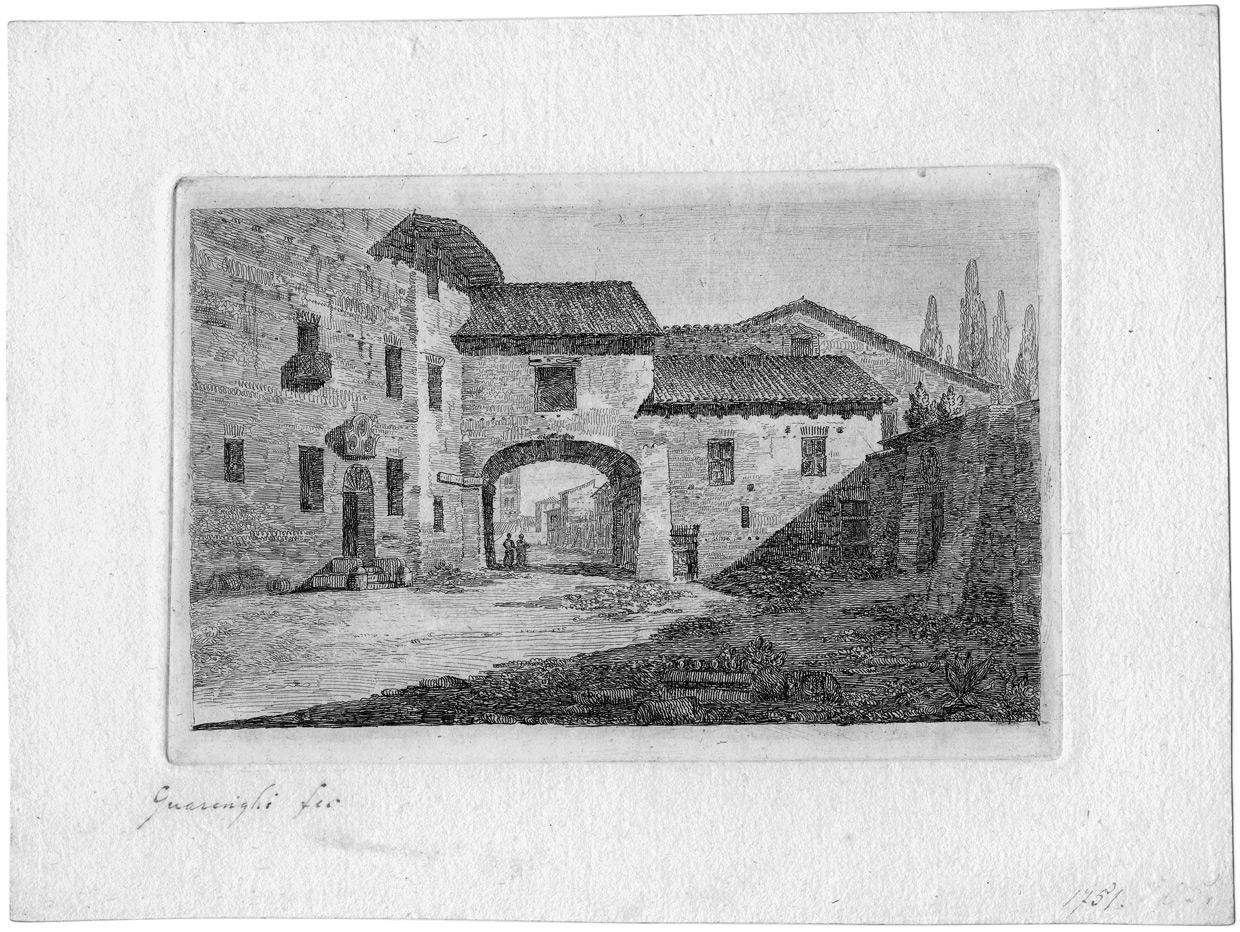Loading the page ...
Giacomo Quarenghi
(1744 Valle Imagna near Bergamo – 1817 St. Petersburg)
View of the Porta Salaria in Rome. Etching. 13.5 x 20.5 cm. Inscribed in pen and brown ink, probably by the artist himself: “Guarenghi fecit”. Nagler 1 I (of II).
Giacomo Quarenghi is known mainly as an architect, although he was originally trained as a painter by Anton Raphael Mengs in Rome at a very early age. He soon discovered his gift for architecture, however, and devoted himself to an intensive study of the work of his great predecessor, Andrea Palladio. Quarenghi quickly won considerable renown as a master builder and was invited to the court at St. Petersburg by Catherine II of Russia in 1779. He became the Empress’s favourite architect and left his stamp on the Russian royal capital of the time in the form of its characteristic Neoclassicist-Palladian buildings.
The present, extremely rare etching was unknown to most earlier authors, such as Le Blanc and Heller-Andresen. As is so often the case, the outstanding connoisseur, Georg Kaspar Nagler, author of the Künstler-Lexikon that bears his name, can claim the credit for including the print in his critical list of Quarenghi’s works. However, it is debatable whether the city gate shown here really is the Porta Salaria, as Nagler states. The gate in question, located in the northern section of the Aurelian Wall and demolished in 1871, is shown in an engraving by Giuseppe Vasi as a typical fortification of the Later Roman Empire, with two round towers flanking the entrance. What we see here, however, is probably an otherwise unknown building along the ancient Via Salaria.
The present image is rendered in a light and highly differentiated etching technique, which in its emphasis on chiaroscuro and atmosphere would be inconceivable without the example set by Canaletto. It is perhaps no accident that the format of the copperplate is quite similar to that of Canaletto’s small Venetian vedute and landscape capriccios (Bromberg 18–31). Like Canaletto, Quarenghi uses dense, wavy parallel hatching in the foreground to produce an effective contrast between the shady terrain and the sunbathed piece of masonry. The different textures of the wall and roof tiles are indicated by a wide variety of short little lines, zigzags and manifold parallel hatching. If this first work had not also been his last, Quarenghi would doubtlessly have developed into a respectable etcher.
A very fine, contrasting impression with wide margins around the clearly defined platemark, before all text. Slight staining, dated in pen and brown ink in the lower right margin, otherwise in excellent condition.
